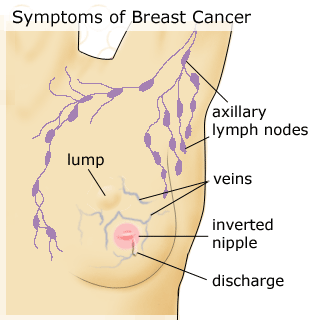Minorities most vulnerable to financial slide after breast cancer
Black and Latina breast cancer patients were more than twice as likely as white women to have lingering medical debt and to skip treatments because of costs, according to a new U.S. study.
Based on surveys of 1,500 women diagnosed with mostly early-stage breast cancers, researchers found that up to one quarter were struggling financially as a result of their disease.
“Although we were able to control for factors such as overall household income in this study, it is likely that other disparities and challenges faced by minority populations persist in our society even today, contributing to the differences observed,” author Dr. Reshma Jagsi told Reuters Health by email.
Jagsi worked on the study in the Department of Radiation Oncology at the University of Michigan in Ann Arbor.
Between 2005 and 2007, she and her coauthors surveyed women diagnosed with mostly early-stage breast cancers that had not spread nine months after diagnosis and four years later. The women lived in the Los Angeles and Detroit areas and about half had received chemotherapy.
Of those women, 12 percent reported having medical debt at the four-year survey.
 That group included nine percent of the white women participating in the survey, compared to 10 percent of the Spanish-speaking Latinas, 17 percent of the English-speaking Latinas and 15 percent of the black women, according to the results in the Journal of Clinical Oncology.
That group included nine percent of the white women participating in the survey, compared to 10 percent of the Spanish-speaking Latinas, 17 percent of the English-speaking Latinas and 15 percent of the black women, according to the results in the Journal of Clinical Oncology.
These proportions persisted even when the researchers accounted for income, education and employment.
About 35 percent of the women reported spending $2,000 or more out-of-pocket on cancer treatments, and 17 percent spent more than $5,000.
At the four-year mark, some survey questions assessed the level of financial strain the women had been under for the past year.
Six percent of black women, compared to 3 percent of white women, said they had taken less than the full amount of their prescribed medications in the last year due to cost. Black and Latina women were also more likely to have missed doctor appointments due to cost than white women.
Black and Latina women were more likely to have gone without health insurance or moved out of their houses due to cost since their cancer diagnosis, although only five percent of women total had to do this.
Two percent of white women reported having utilities turned off due to unpaid bills, compared to 11 percent of black women.
 “Overall, cancer is one of the most expensive diseases to treat in the United States,” Dr. S. Yousuf Zafar told Reuters Health by email.
“Overall, cancer is one of the most expensive diseases to treat in the United States,” Dr. S. Yousuf Zafar told Reuters Health by email.
Zafar, a medical oncologist at Duke Cancer Center in Durham, North Carolina, was not involved in the new study.
“Compared to patients with chronic illnesses other than cancer, patients with cancer are at risk for higher treatment-related out-of-pocket expenses,” he said.
Cancer patients face direct costs, like copayments for prescription medications, visit copays, and coinsurance, and indirect costs, like lost income from time off work, transportation for treatment, and childcare, he said.
Minority populations might be especially at risk due to insufficient employee health benefits, cultural barriers and poor health literacy, he said, especially since Spanish-speaking Latinas were at the greatest risk for declining financial status.
“Our findings suggest that racial and ethnic minority patients appear to be more vulnerable, as are those who are too young to qualify for Medicare, those who lack prescription drug coverage, those who reduce their work hours after diagnosis, and those with lower household income at the time of diagnosis,” Jagsi said.
Women who receive chemotherapy or who have recurring breast cancers may also be at higher risk for financial decline, she said.
Health care providers need to be sure to communicate with newly diagnosed cancer patients about the financial implications of cancer diagnosis and treatment decisions, she said.
“Specific provisions in the (Affordable Care Act), including annual caps on out-of-pocket spending, will hopefully ease some of the financial burden experienced by patients,” Zafar said. “However, in reality, we know very little about how those provisions will actually translate into cost savings for patients.”
SOURCE: Journal of Clinical Oncology, online March 24, 2014
Long-Term Financial Burden of Breast Cancer: Experiences of a Diverse Cohort of Survivors Identified Through Population-Based Registries
Results Among 1,502 patients responding to both surveys, median out-of-pocket expenses were ≤ $2,000; 17% of respondents reported spending > $5,000; 12% reported having medical debt 4 years postdiagnosis. Debt varied significantly by race: 9% of whites, 15% of blacks, 17% of English-speaking Latinas, and 10% of Spanish-speaking Latinas reported debt (P = .03). Overall, 25% of women experienced financial decline at least partly attributed to breast cancer; Spanish-speaking Latinas had significantly increased odds of this decline relative to whites (odds ratio [OR], 2.76; P = .006). At least one privation was experienced by 18% of the sample; blacks (OR, 2.6; P
< .001) and English-speaking Latinas (OR, 2.2; P = .02) were significantly more likely to have experienced privation than whites.
Conclusion Racial and ethnic minority patients appear most vulnerable to privations and financial decline attributable to breast cancer, even after adjustment for income, education, and employment. These findings should motivate efforts to control costs and ensure communication between patients and providers regarding financial distress, particularly for vulnerable subgroups.
Reshma Jagsi,
John A.E. Pottow,
Kent A. Griffith,
Cathy Bradley,
Ann S. Hamilton,
John Graff,
Steven J. Katz and
Sarah T. Hawley